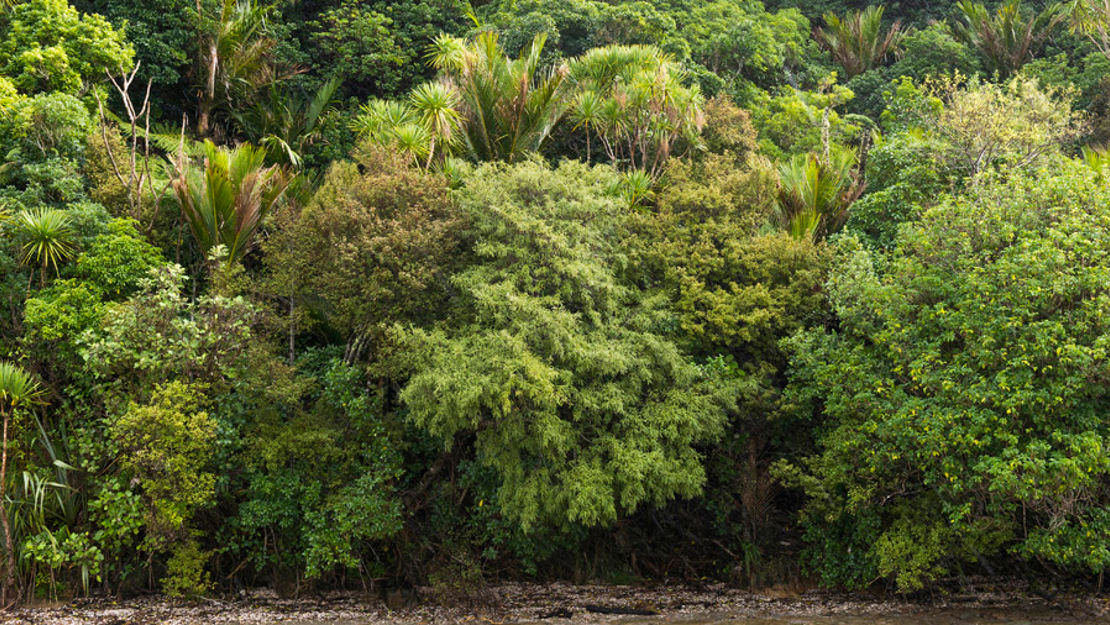Pōhutukawa, pūriri, broadleaved forest ecosystem (WF4)
Scattered along Auckland's coastlines, this broadleaved forest ecosystem provides an important source of food for kererū. They are also important seed dispersers for many species in this ecosystem.
Warm forest ecosystem
About this ecosystem
This ecosystem occurs in coastal areas, usually within 800 meters of the shore where exposure to wind and salt spray is at its greatest.
This coastal broadleaf forest has been greatly reduced from its original extent. Remnants occur along stretches of our coastline and on islands in the Hauraki Gulf.
You can find some of the best examples of this ecosystem in:
- Waitākere Ranges (coastal areas)
- Maungatauhoro headland (between Wenderholm beach and Waiwera River)
- Great Barrier Island.
On Rangitoto Island, younger variants that are dominated by pōhutukawa, are slowly developing into this ecosystem type.

Flora and fauna of this ecosystem
A diverse range of broadleaf trees is common in this ecosystem, including:
- pōhutukawa
- koekohe
- taraire
- pūriri.
Local differences in species composition can occur with variable environmental conditions.
These forests are an important habitat for:
- kererū
- gecko
- kākā
- tūī
- korimako (bellbird).
Kererū play an important role in the seed dispersal and regeneration of many trees in this ecosystem. They are one of the few species that are able to eat and digest large fruits and are considered a keystone species.
Threats to this ecosystem
This ecosystem has been reduced in extent by human settlement and conversion of land to horticulture and agriculture.
Threats to this ecosystem include:
- weeds
- animal pests (herbivores and predators)
- sea-level rise as a result of climate change.



